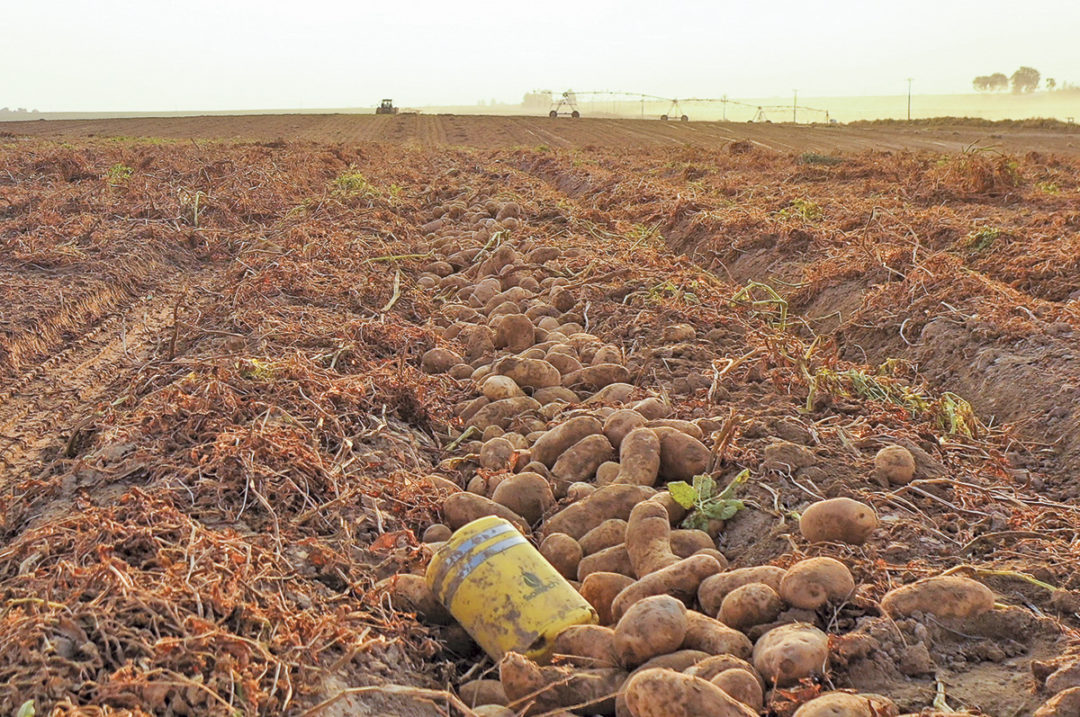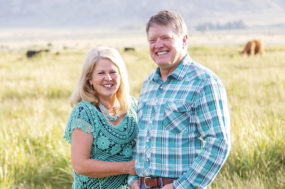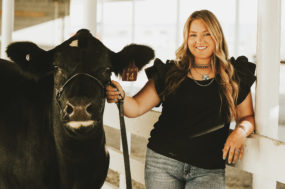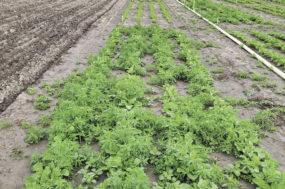Technology can be a farmer’s friend. For example, a device about the size of a pound or two of butter is buried in the field and is helping farmers improve crop quality, boost yields and reduce environmental impacts through data-driven insights from soil to storage. It monitors moisture, location, impact, humidity and temperature, and distributes that data wirelessly. How do you find them later to collect them? You let them run through the harvesting machinery, just like a potato.
Randy Bauscher, a partner in B&H Farming in Rupert, says, “I have been using the Soiltech Wireless water sensors for three years. The first year, we had three to demo in a few of our potato fields on our 12,000-acre farm. The next year, we got 15 and put one in 15 different potato fields. The following year, we had 50 sensors with two in each of our 25 potato fields. The sensors have worked very well, and we have grown to trust the readings to help us manage our pivots. We figure it costs us around $500 per revolution to pump water through our pivots. So if we save one revolution, it will pay for the sensor. The devices can also be run through our harvesting equipment and will graph out the highest-impact drops of the potatoes, thus allowing us to make some adjustments to eliminate the spots where the potatoes are most likely to get bruised. We had a very remote seed potato storage last year, and I placed three sensors on each side to the storage, and I could see on my computer screen every day the temperature as well as the humidity of the storage. This saved a tremendous amount of driving to check on the storage and gave me a lot of relief that the storage was not getting too cold.”
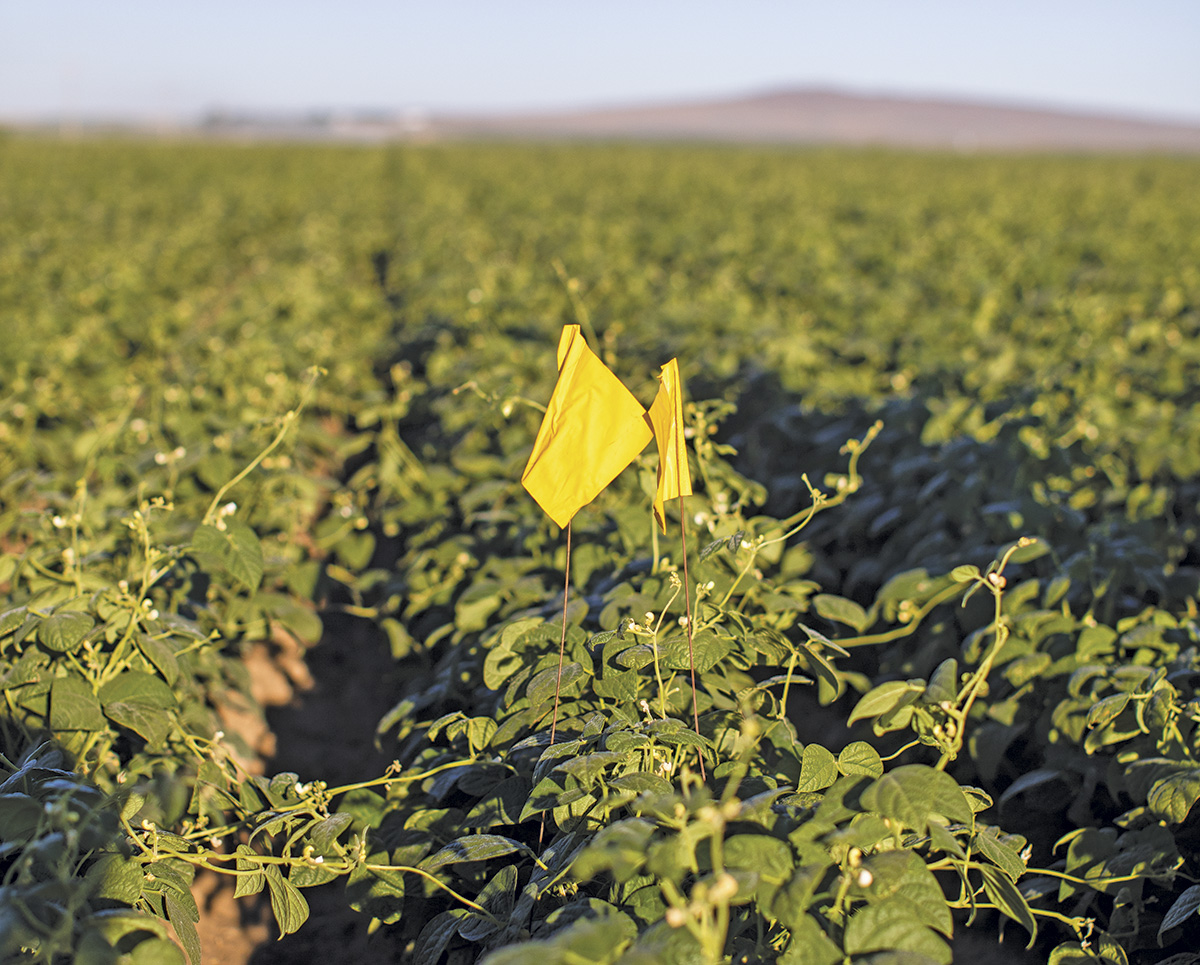 A field monitor location is marked and easily identifiable in this bean crop. Photo courtesy of Soiltech Wireless Inc.
A field monitor location is marked and easily identifiable in this bean crop. Photo courtesy of Soiltech Wireless Inc.
“Cranney Farms was established in 1907,” says Jordan Cranney of Cranney Farms in Oakley, “and I am generation six of the family farm. A usual growing season consists of sugarbeets, malt barley, wheat, hay, mustard (recently) and potatoes.”
Cranney says, “We got started with the soil probes from the very beginning because of a personal relationship we have with the founder and CEO, Ehsan Soltan. The first few summers, Ehsan planted the probes and monitored the data himself in our potato fields. After two trial summers, we planted what you see today – seven of the yellow probes into four of our potato fields. This summer will be our third summer with the commercial probes in the ground. It was incredible to watch how quickly Ehsan and his small team could make changes that helped give more accurate information and make the mobile app much easier to use.”
Cranney says, “The probes have been easy to use and have provided great information these last several years. As users of this technology, we are beginning to see more of the benefits as time goes on. When we first began using the probes, we were excited to see what it could do for us, but we weren’t sure exactly what that would be. As the past few seasons have gone by, we learned how to better apply the information that it can provide. This last season being extremely dry and hot was interesting to see on the technology platform. Not only could we see what was happening with the foliage of the potato in the blistering heat, but we could see what those plants were experiencing under the soil. We began to see a steady climb in soil temperature that gave us reason to be even more concerned about the outcome of the crop. At our weekly water meeting, we could make specific adjustments and apply what we were learning from the units to give our potatoes the best chance at the highest yield with the given conditions.”
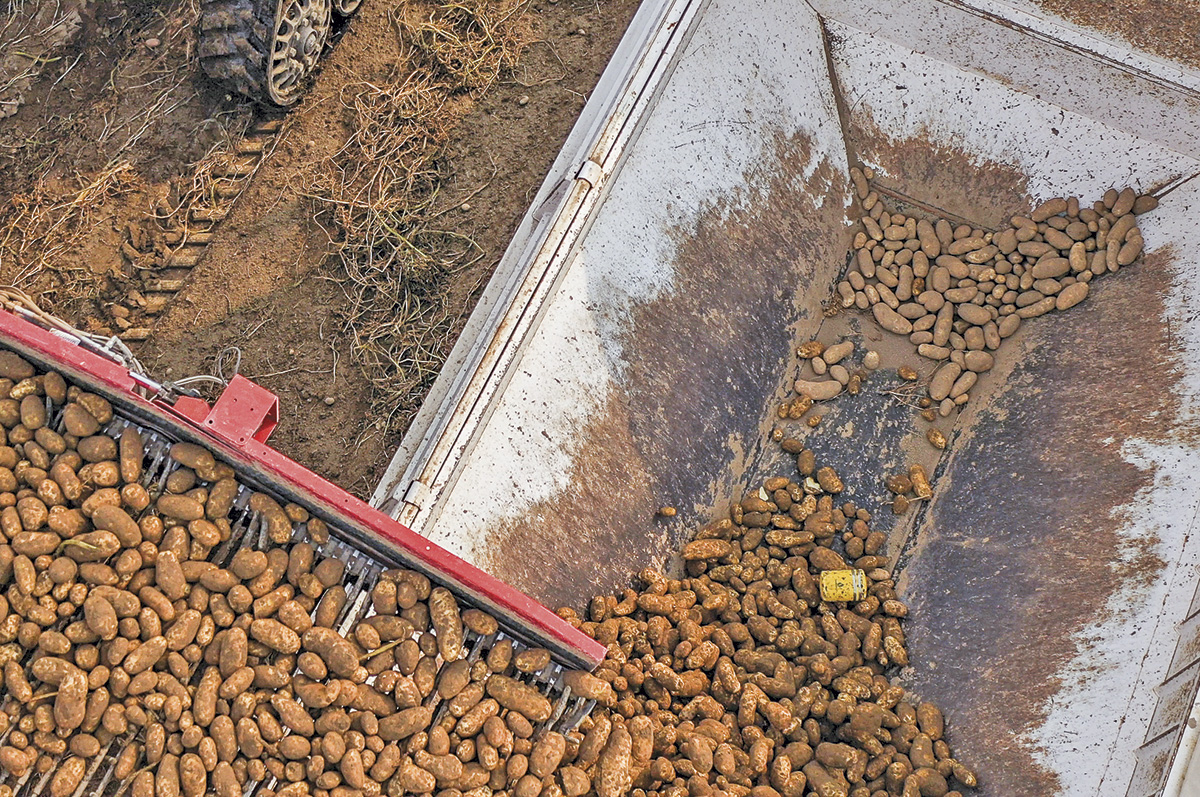 The wireless monitor is harvested with the potatoes and is built to withstand the rigors of harvesting equipment. Photo courtesy of Soiltech Wireless Inc
The wireless monitor is harvested with the potatoes and is built to withstand the rigors of harvesting equipment. Photo courtesy of Soiltech Wireless Inc
Cranney says since they have been using the monitoring technology, there have been some very dry and hot summers. So the main things they look at are soil temperatures and moisture readings. Beyond those two things, in any given year there could be a different set of information that proved to be more valuable than it has been in the past. “So far, this technology has been like the Leatherman of products for us. Some of the tools we use frequently, and others not as much. As our local microclimate continues to change and we see weather different from what we have seen the past few summers, the tools we use will change too,” Cranney says. “We are excited for another summer using the probes to see what more we can learn about the product and what else we can apply to strive to produce the best crop we can.”
The ag technology company was started in 2018 after its founder met with many growers and agronomists in southern Idaho, where he learned about the challenges they faced in running their operations. He moved from Taiwan to southern Idaho so that he could partner with growers to build the product. The probes are not confined to potato field use but have also found application in onions, sugarbeets and barley.
